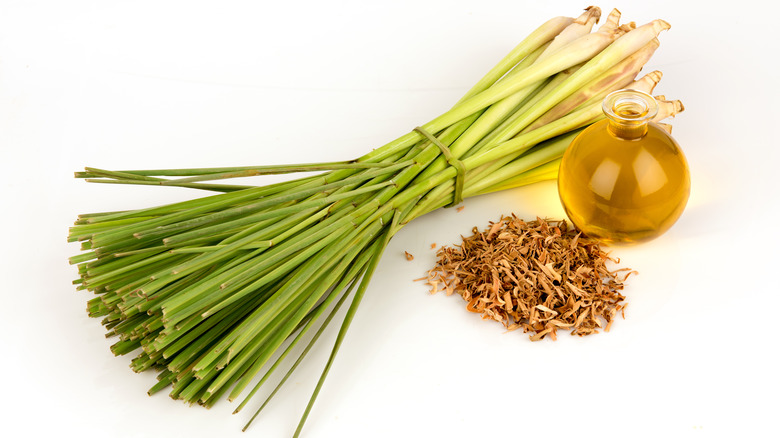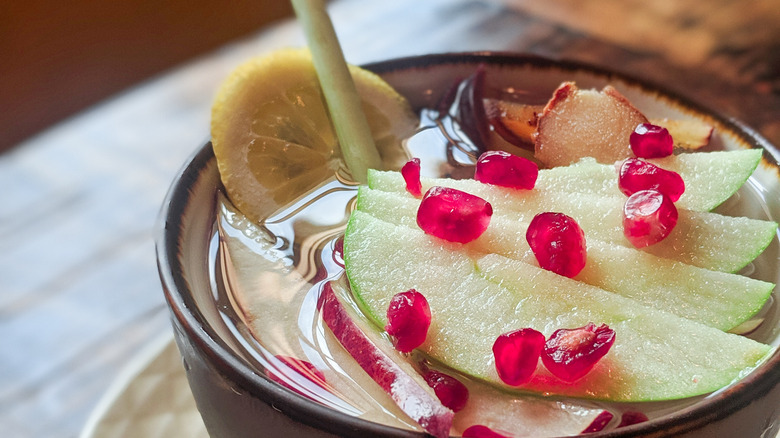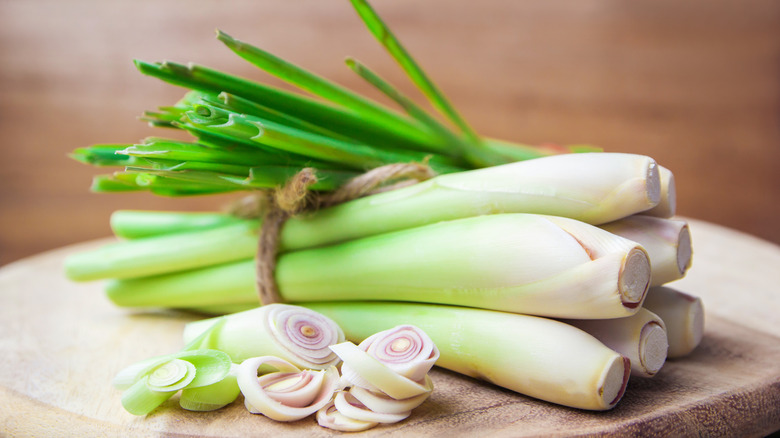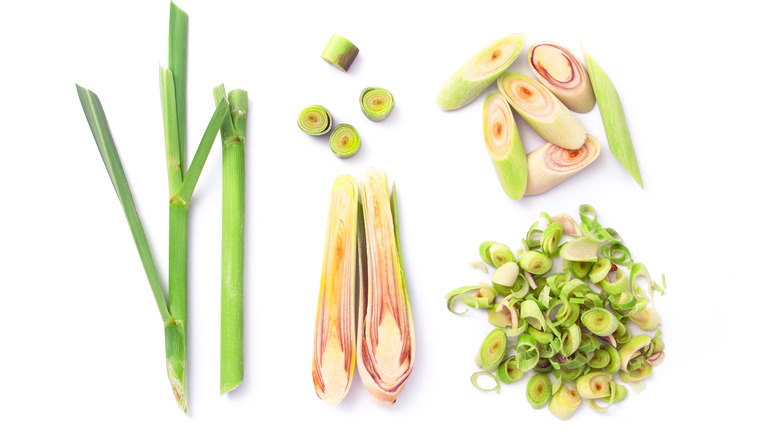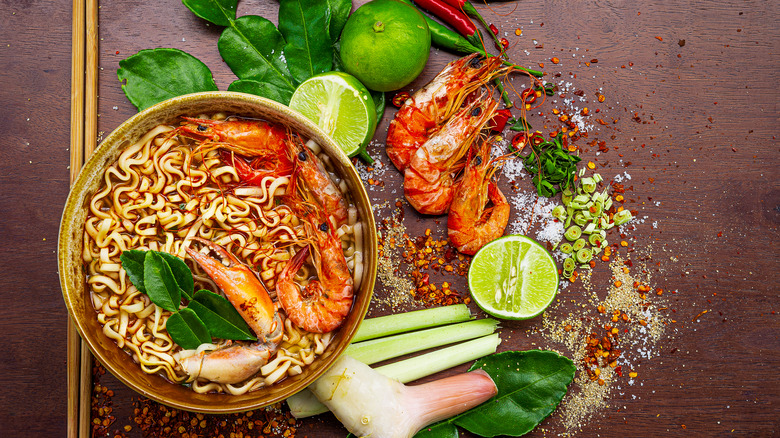The Difference Between Fresh And Dried Lemongrass
If you like Asian cuisine, particularly Thai food, chances are you have experienced the citrusy herb known as lemongrass. Commonly used when making chicken, shrimp, or tofu dishes, lemongrass is a fibrous herb that imparts a lemon taste and smell upon foods with which it is cooked. Garden Know How shares that lemongrass really is a grass, though it is more closely associated with bamboo than your run-of-the-mill suburban lawn. Native to Asia, Africa, South America, and Australia, today, lemongrass can be found just about everywhere, especially in the fresh produce section of most grocery stores.
This herb has been around for a long time and has uses that extend well beyond the culinary. From perfumes to insect repellants to helping sore muscles, lemongrass is quite versatile. Of course, if you ask us, nothing beats cooking with this lemony ingredient, allowing it to impart its lovely flavor in our favorite recipes.
Lemongrass can be used in drinks
Lemongrass has become super trendy over the years, tasting equally wonderful in both sweet and savory concoctions. In addition to cooking the herb with favorite dishes and adding an incredible scent to your kitchen, lemongrass is a favorite among mixologists stirring up unique and flavorful cocktails — even celebrity chef Bobby Flay uses it to make his tropical sangria (via Food Network).
If this alcoholic beverage is not your cup of tea, lemongrass can literally be made into a delicious tea to sip on. Medical News Today says this process is super simple, even without a tea bag. Simply slice your lemongrass stalk into 1-2 inch pieces and steep in boiling water for at least 5 minutes. Lemongrass tea is thought to help manage anxiety and pain.
Fresh lemongrass tastes different than its dried counterpart
If you're wondering if there are differences between the dried and fresh version of lemongrass, you're not alone. If you have the option to choose, you're better off buying fresh lemongrass over dried, as dried lemongrass tends to lose its flavor rather quickly. But that's not the only difference between fresh and dried lemongrass.
According to Cooks Illustrated, dried lemongrass makes foods it's cooked with take on a woodsy and "complex" flavor, while fresh lemongrass gives foods more of the citrus and minty effect. That seems like quite the range of flavors; however, the surprising thing about dried and fresh lemongrass is that, despite said taste differences, you can easily substitute one for the other.
That said, Cooks Illustrated cautions that dried lemongrass is tough to rehydrate, so if what you are cooking doesn't have a lot of liquid, the fresh version is the better choice. They also note that if you do substitute dried for fresh, remember dried herbs are more concentrated so follow the rule of only using half of what is called for when cooking with fresh so you do not overwhelm your stir fry or soup.
Here's how to chop up your lemongrass
If you are new to cooking with fresh lemongrass, don't be intimidated by the way it looks. The stalk is the part you are interested in, not the bulb or any of those tough outer leaves. Begin by taking your knife and slice or peeling off the outer leaves until you reach the pale, yellow stalk. Now, you are ready to chop it up (removing the bulb) until you are out of the soft, yellow flesh. Once you have your lemongrass chopped up, use a food processor to make smaller, more bite sized and chewable pieces if desired.
Be sure to hang on to the top of those stalks, as you can use them in stock or other dishes to add a lemony flavor. But be sure to discard the stalk before you serve, however, as it is not edible. To store leftover lemongrass, Foodprint.org recommends wrapping it up in a damp paper towel and placing in the fridge for up to 10 days. You can also freeze it and store in a freezer-safe container if you need to extend its shelf life for future meals.
What can you use as a substitute for lemongrass?
What if you are making your favorite Tom Yum soup and realize you are fresh out of lemongrass? Good news! There are several ingredients you can use to substitute for lemongrass. Meal Prepify suggests trying a combination of equal parts fresh cilantro stalks (not the leaves) and ginger to mimic the flavor of fresh lemongrass, while Tasteessence recommends trying a little bit of lemon verbena, but cautions that you do not need a lot and should follow a two leaves per one stalk of lemongrass rule.
The Greedy Gourmet shares you can use lemon juice or zest in place of lemongrass, sharing that lemon zest is probably the closest substitute in both texture and flavor. Lemon zest will definitely give your dish that burst of flavor, but don't expect it to taste exactly the same. Additionally, they note that if you are just looking for a subtle flavor of lemongrass, you can use the less acidic, but slightly sweeter, juice or zest from a lime as an alternative.
